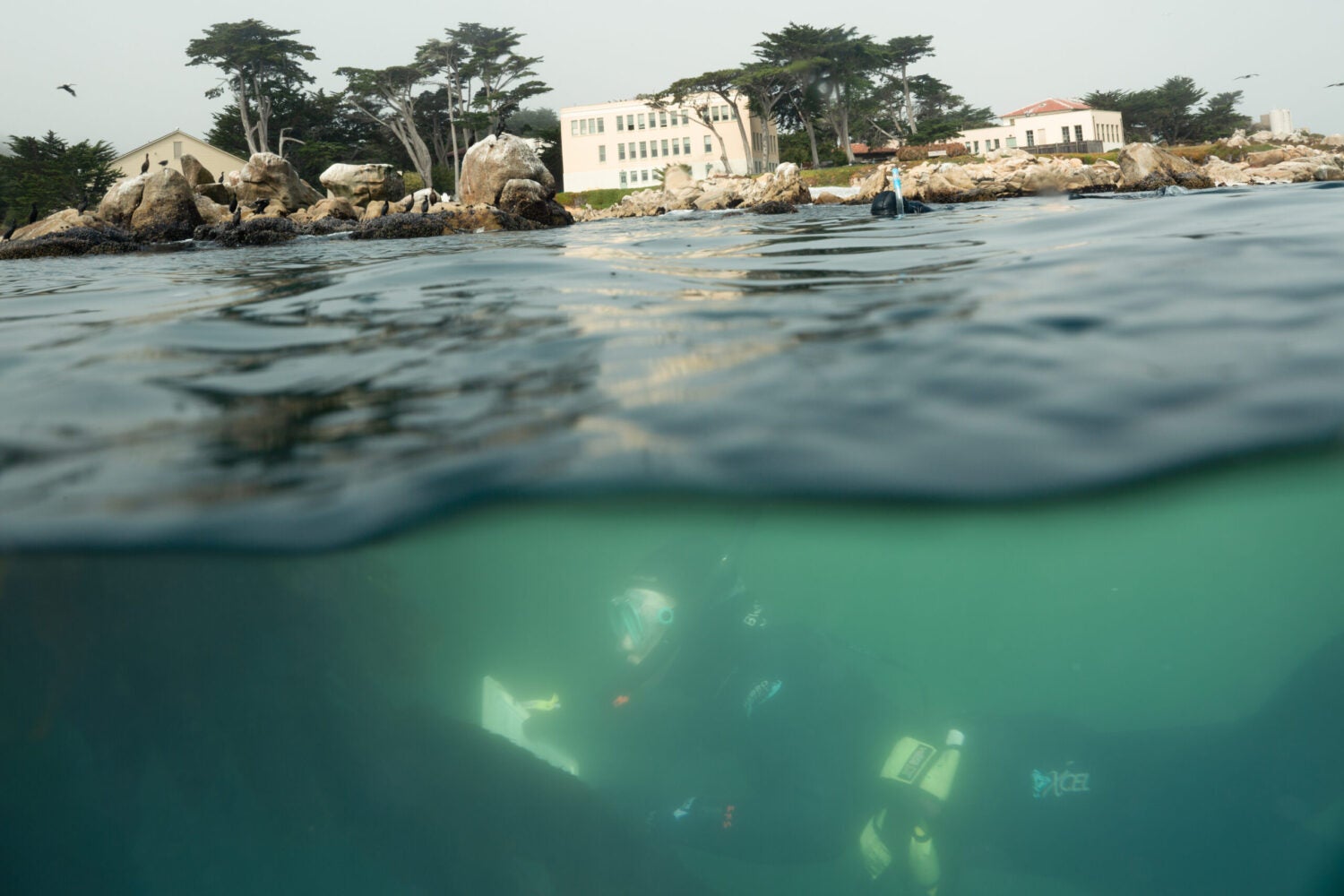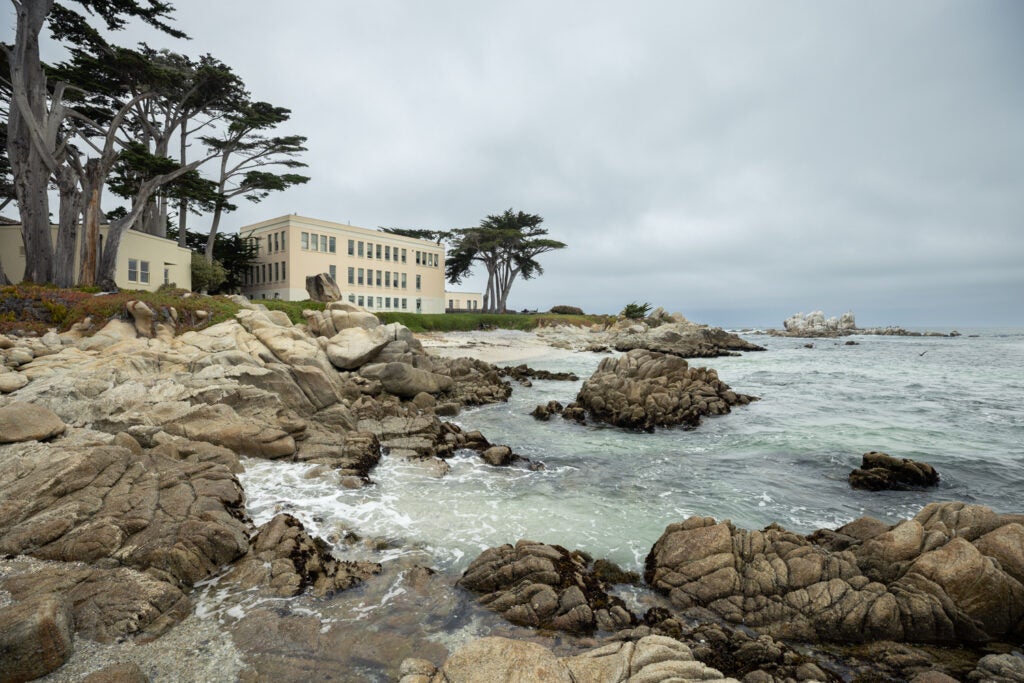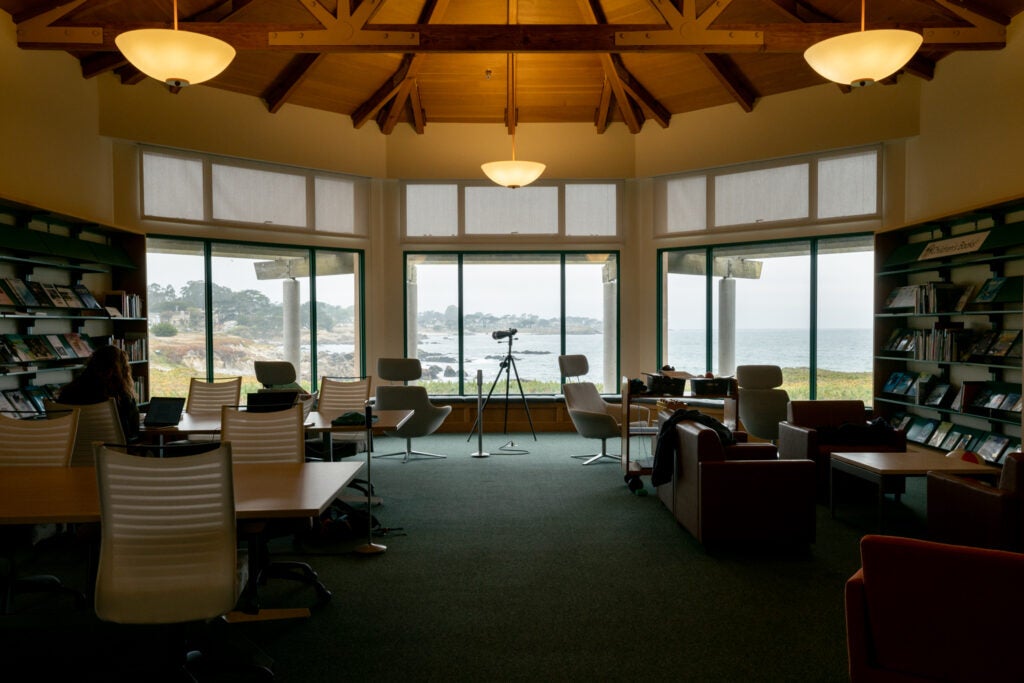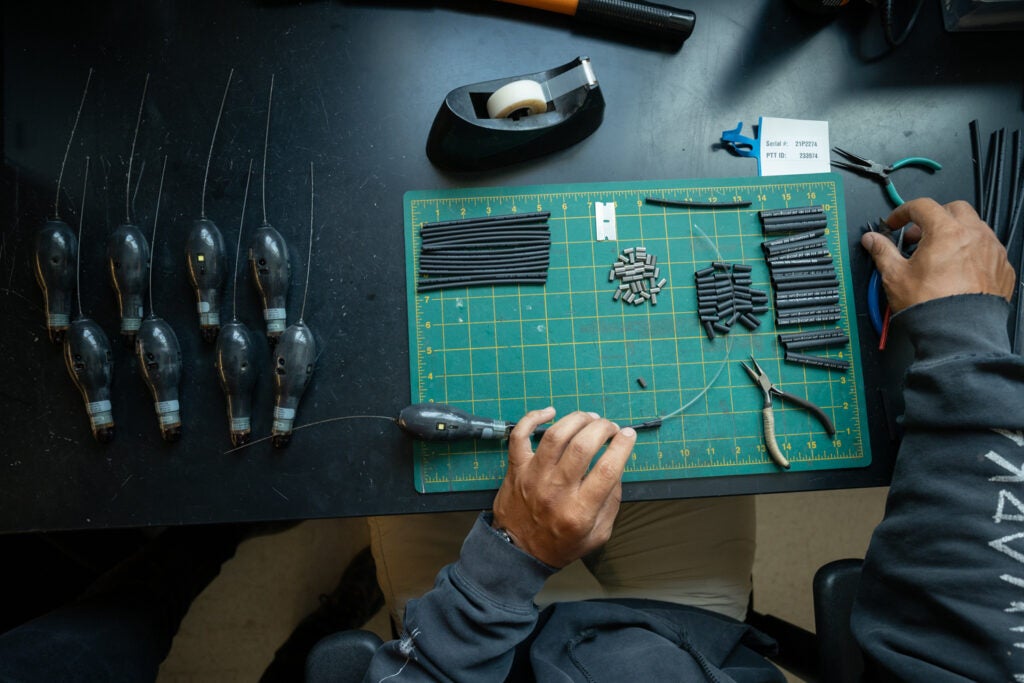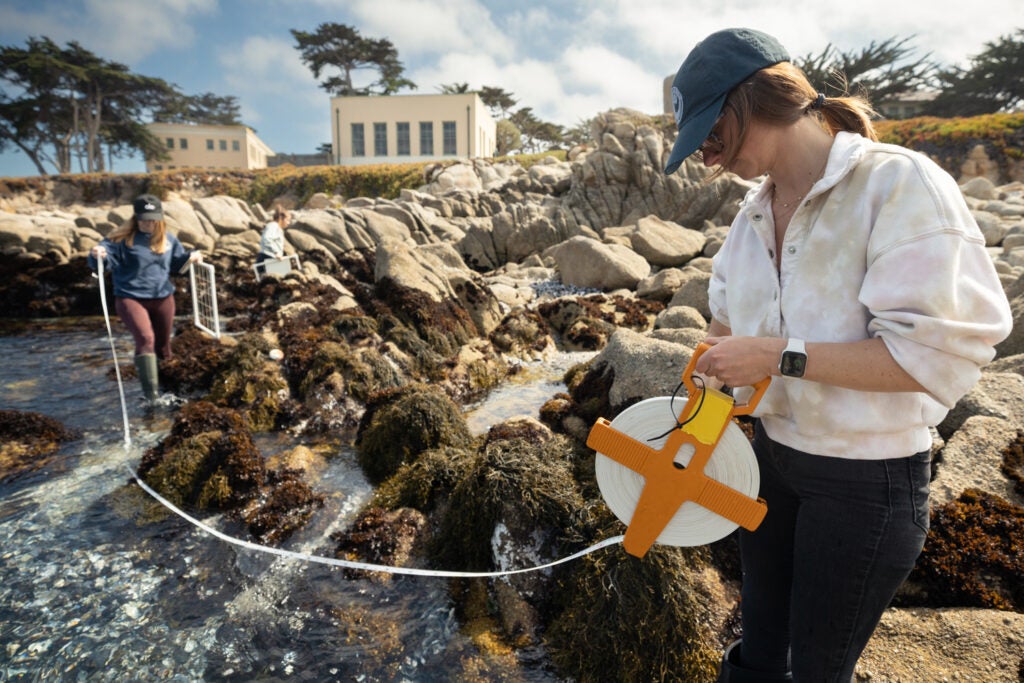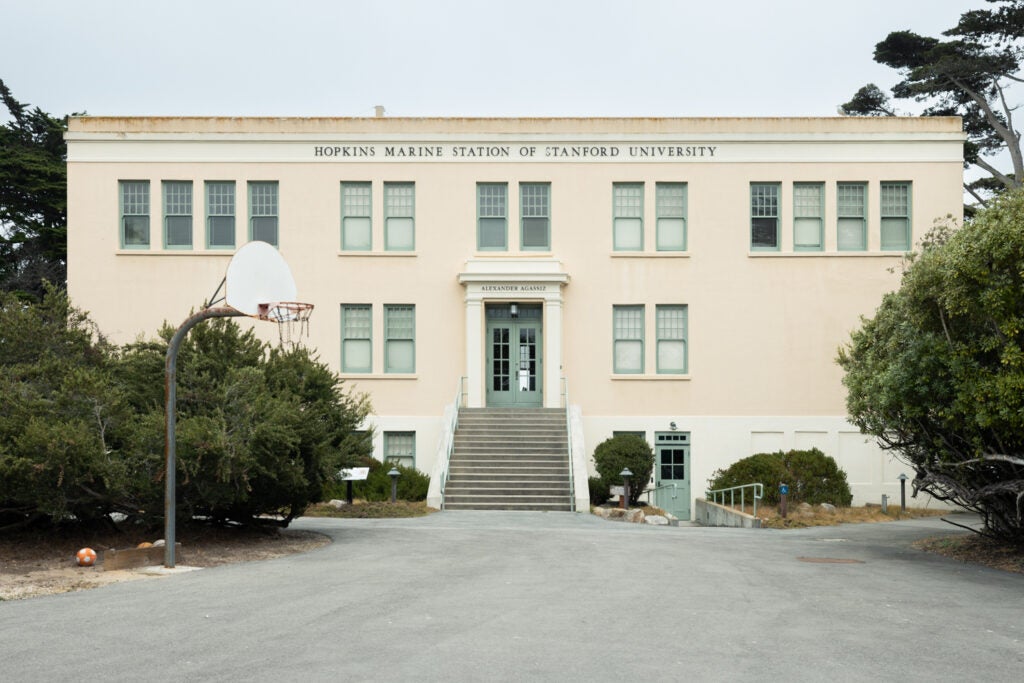From the Farm to the deep blue sea: The beginning of a new chapter at Stanford
A beacon of ocean research for over 100 years, Stanford’s Hopkins Marine Station in Pacific Grove has a storied history. This fall, it enters a new chapter of ocean research, education, and impact when it becomes part of the new Stanford Doerr School of Sustainability.
A two-hour drive south of Stanford’s main campus, a cluster of fog-kissed buildings occupy a rocky headland overlooking Monterey Bay. Here, for over a century, Hopkins Marine Station has housed labs for world-class scientists and hosted cohorts of students. Adjacent to the Monterey Bay Aquarium, the 11-acre research facility sits on the ancestral land of the Ohlone Rumsen tribe and is the oldest marine laboratory on the West Coast – the third oldest in the United States. This fall, Hopkins will add a new chapter of research, education, and impact to its storied history as part of Stanford’s new Doerr School of Sustainability.
On Sept. 1, Hopkins Marine Station became a part of the new Stanford Doerr School of Sustainability, joining an inaugural Oceans Department that will unite scholars from across the university in pursuit of ocean discovery and sustainability. This vibrant community will accelerate research and technologies that enable new discoveries and allow for sustainable, equitable use of the oceans, and develop curricula – both inside and outside the classroom – to train the next generation of experts and leaders. As Stanford’s doorway to the ocean, Hopkins will be a platform for developing, testing, and applying innovative concepts and tools in research, education, and outreach. And, as it has done for generations, the coastal campus will serve as an inspirational backdrop for students to experience a deep connection with the sea – many for the first time.
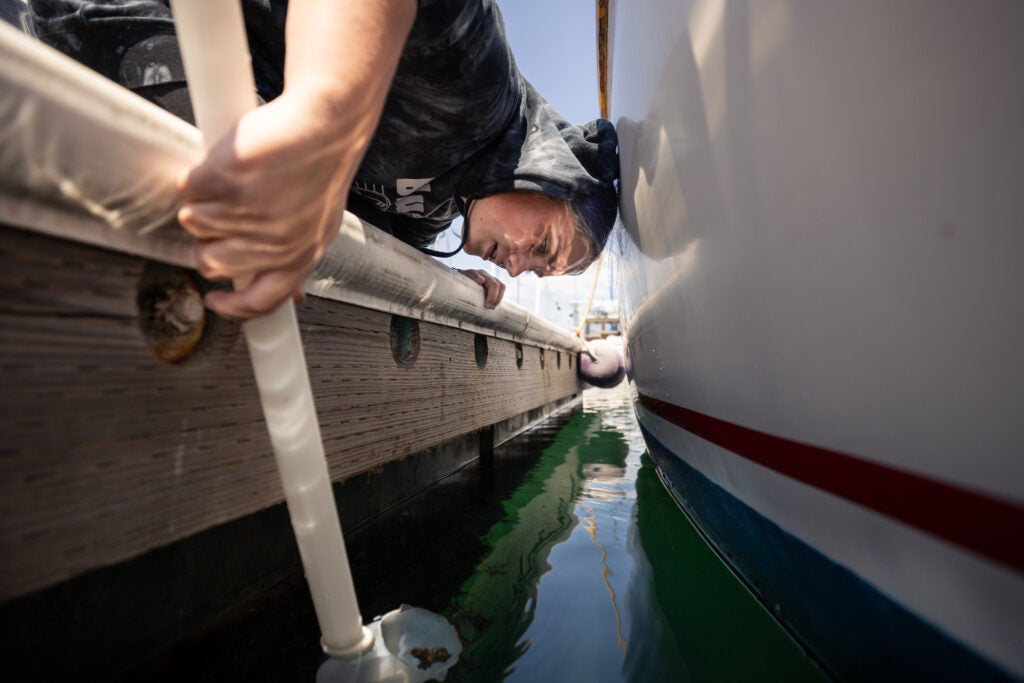
High school student Erica Domen collects samples of Tunicate, a fast-growing marine invertebrate, at the Monterey Marina. (Image credit: Andrew Brodhead)
“Hopkins Marine Station has made major contributions to research and teaching,” says Fiorenza Micheli, co-director of the station and the Stanford Center for Ocean Solutions, and the inaugural chair of the new Oceans Department. “Going forward, the goal is to increase access to these unique facilities, expand research and education opportunities for all of Stanford, build capacity in technology, and inspire and train future ocean leaders.”
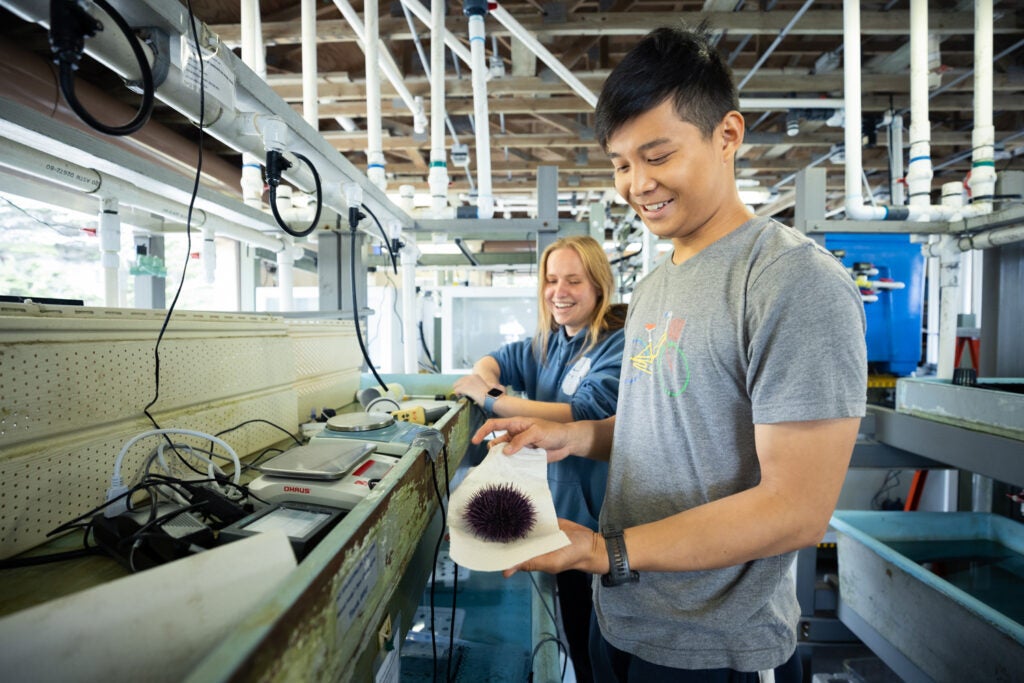
Stanford undergraduate Max Shen monitors a pacific purple sea urchin. (Image credit: Andrew Brodhead)
Hopkins isn’t your ordinary office or classroom. The intertidal and offshore waters surrounding the station encompass the Lovers Point-Julia Platt State Marine Reserve, protected by law from fishing and collecting. Flippered staff and students can walk into the waves from Hopkins’ Agassiz Beach to snorkel or scuba dive through an underwater kelp forest, a hallmark ecosystem of the California coast. Since the 1970s, Hopkins has hosted a summer course on the ecology and conservation of kelp forests. A rigorous offering, it trains students to be scientific divers, teaching them how to collect data underwater while safely maneuvering amidst the kelp’s swaying fronds.
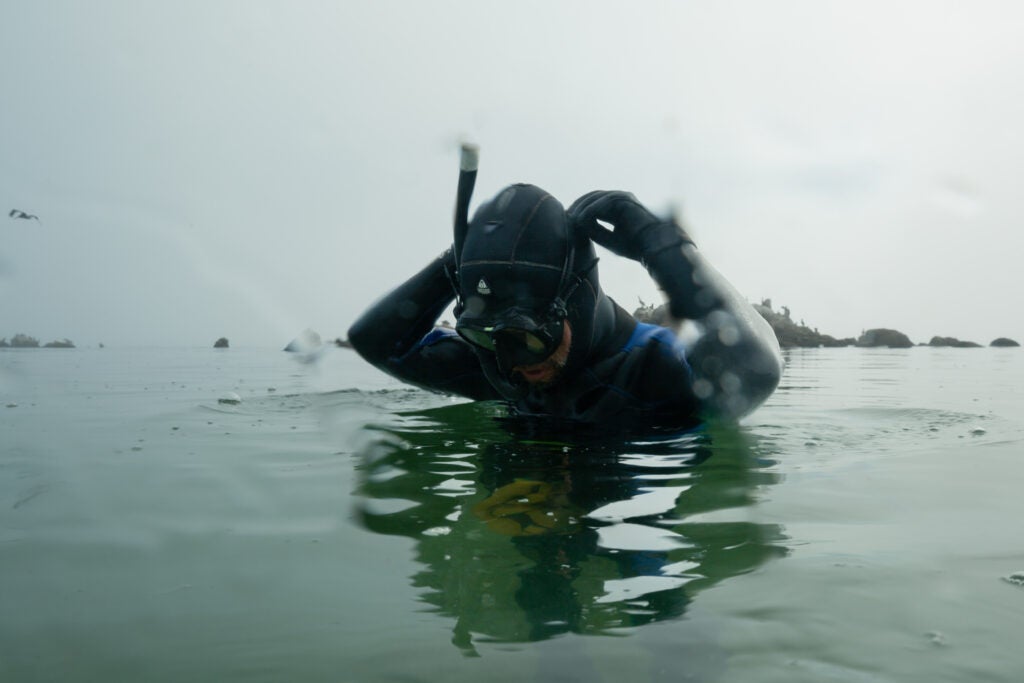
Postdoc researcher Nur Arafeh-Dalmau gets ready to free-dive in the kelp forest. (Image credit: Andrew Brodhead)
Archiving this history, and with arguably the most inspiring view of any Stanford building, is the Harold A. Miller Library, its windows framing the wide ocean vista that stretches out before it. The library hosts one of the most interesting troves of marine science data in the world, with materials dating back to the 1800s. Among its collections are observations of sea life annotated by Ed Ricketts, the famous marine biologist and friend of John Steinbeck, fondly referred to as ‘Doc’ in the novel Cannery Row. Today, these observations – made available in person and online – help researchers establish a benchmark against which to measure a changing world, like tracking the spread of disease or invasive species. Such snapshots in time are crucial for understanding the past, predicting the future, and planning for the sustainability challenges of the 21st century.
Comprising 10 faculty labs, nearly two dozen graduate students, and 13 postdocs, Hopkins researchers focus on the fundamental biology of plants and animals, how species change and evolve, and how they interact. Their inquiry spans different organisms – from habitat-building species like corals and kelp to top predators like tuna and sharks – and different levels of biological organization starting at the molecular level and scaling up to the entire marine ecosystem.
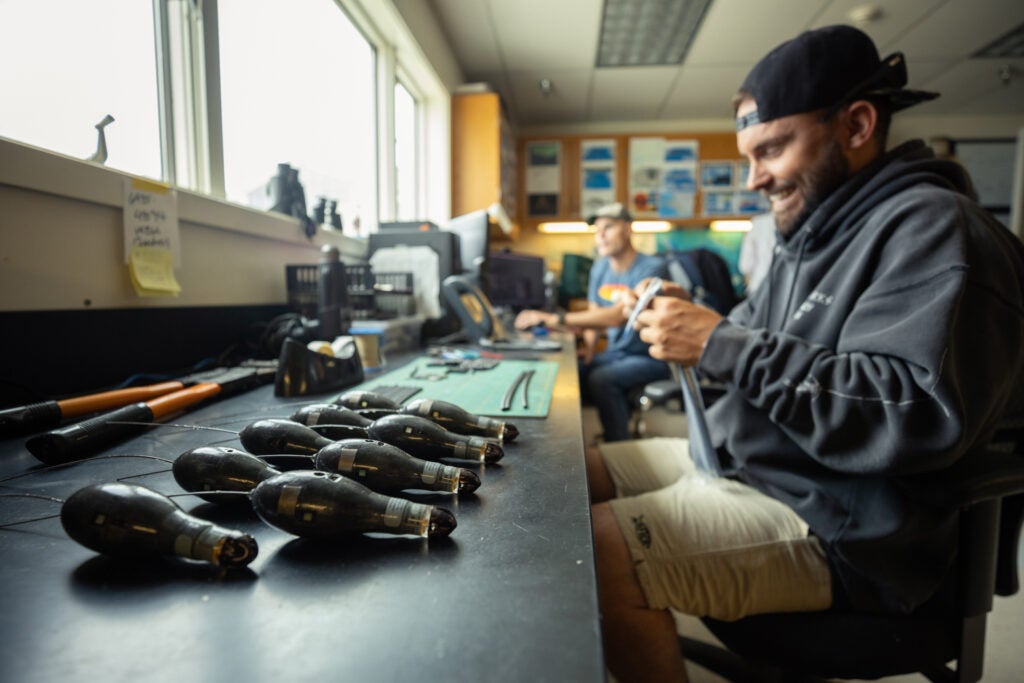
Ted Reimer, a field and lab technician for the Block Lab at Hopkins Marine Station, assembles tags for tracking bluefin tuna. (Image credit: Andrew Brodhead)
Beyond the walls of its research facilities, Hopkins is also a living laboratory. In the early 1930s, a graduate student named Willis Hewatt began inventorying marine life in a nearby tidepool. Nearly 60 years later, two undergraduate students, Rafe Sagarin and Sarah Gilman, rediscovered the exact location of Hewatt’s plot, which measured one yard wide by roughly 100 yards long. Sagarin and Gilman reinstated the tidepool surveys – now known as the Hewatt Transect – and began comparing the number and species of organisms to what Hewatt documented years before. What unfolded was a real-time portrait of life in flux: Many of the species Hewatt documented were gone, and new species had taken their place. The transect is now monitored by undergraduates every spring. As they document sea stars, anemones, and other residents of the tidepools, students also gain a valuable perspective: They witness climate impacts firsthand, a defining experience for students seeking to craft sustainability solutions for ocean and planetary health.
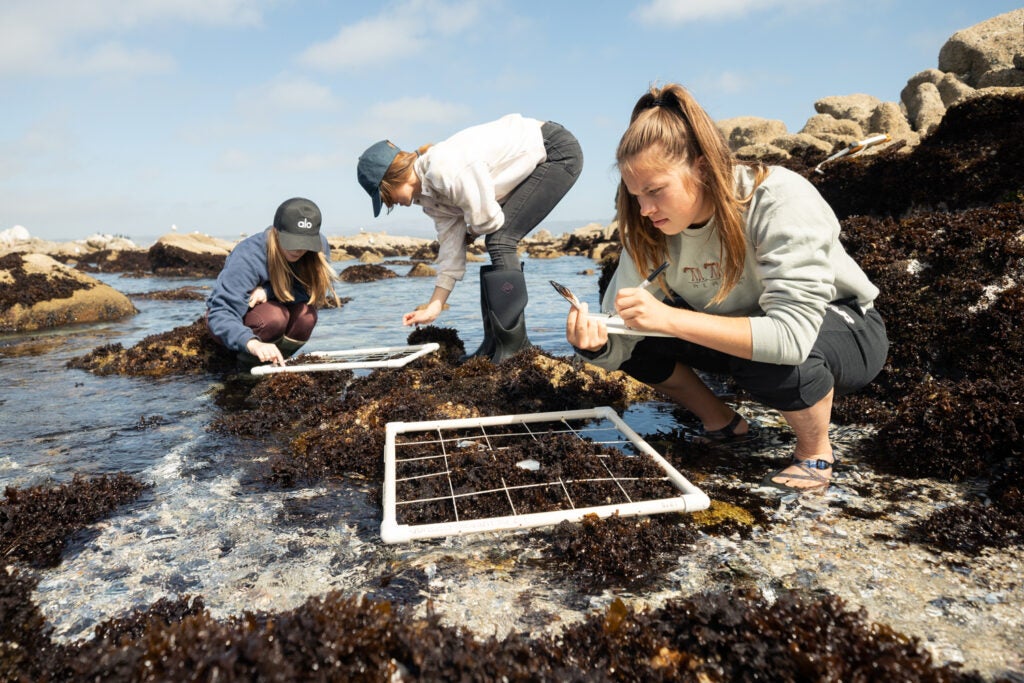
Graduate students Jamie McDevitt-Irwin and Natalie Arnoldi and undergraduate Sarah Pierce take inventory to monitor the health of the tide pools. (Image credit: Andrew Brodhead)
Stanford has long been on the vanguard of traditional marine science, but it also draws from many other disciplines crucial to solving ocean challenges. The Doerr School of Sustainability will bring together – and build upon – the university’s unique strengths like engineering, computer science, political science, design, and business. The Oceans Department, including Hopkins, will develop curricula and degree programs for a world-leading ocean sustainability program. It will also serve as the core for a vibrant community that engages other ocean-focused scholars across campus and beyond the university, ensuring that the research generated at Stanford extends benefits across the globe.
Among the university partners to become part of the new school is the Center for Ocean Solutions (COS), an interdisciplinary program of the Stanford Woods Institute for the Environment and a leader in working from insight to impact to solve pressing ocean challenges. To identify key questions, COS partners with faculty in the new Oceans Department and across the university as well as a broad array of external partners from governments to companies to nongovernmental organizations. By spanning disciplines and sectors, COS forges promising solutions, implements them at scale, and ensures research insights reach decision-makers to change the way we think about and manage our oceans.

Graduate student Alexandra DiGiacomo reviews drone footage of a white shark tagging expedition. (Image credit: Andrew Brodhead)
Integrating Stanford’s extensive capacity to address ocean issues will better position the university to deliver on its mission to design solutions to the world’s most pressing sustainability challenges. Crucial to its success is an elevated and integrated knowledge of the ocean and ocean life – how it regulates Earth’s climate, will contribute to nourishing 10 billion people, provide clean energy, and help remove carbon dioxide from the atmosphere – and the ability to experience it firsthand. Students entering the Doerr School of Sustainability can learn to scuba dive, assess coral reef health in Palau, learn from community leaders in island nations, attend global conferences, climb the rigging of a tall ship, meet for seaside bonfires to chat marine science, print a 3D prototype of a whale tracking tag – and maybe even affix one at sea.
